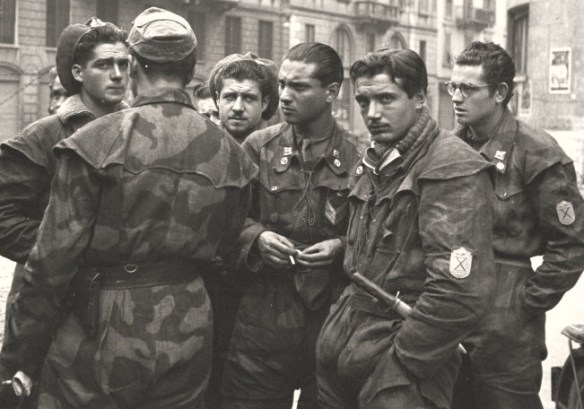(1906–1974) naval officer and political figure
This member of the BORGHESE FAMILY carried on the family military tradition. His personal charisma, independence of mind, military professionalism, and ability to inspire loyalty suggest similarities with the Renaissance CONDOTTIERI of his ancestry. His well-planned attacks on ships supplying the anti-Franco forces during the Spanish civil war could not be publicized at the time because Italy was not officially at war, but they caught the attention of BENITO MUSSOLINI and gave Borghese access to Italy’s highest military and political circles. He developed new techniques of naval attack using small submarines, torpedo boats (MAS), and human-guided torpedoes. During WORLD WAR II he led successful attacks with human-guided torpedoes against British ships in Gibraltar and Alexandria. After Italy’s surrender to the Allies in September 1943, Borghese was among the few naval officers who sided with Mussolini and continued to fight against the Allies. As commander of the battalion Decima Mas he fought against Italian and Yugoslav partisans. His insistence on independent action led to his temporary arrest for insubordination, but he was too popular with the troops to be detained. The slogan of his corps was Tutti per Junio, Junio per tutti (All for Junio, Junio for all). His troops attempted to keep Tito’s Yugoslav forces out of Italian territory. A tribunal sentenced him to 12 years in jail after the war, but he was released almost immediately. In post- war politics he was active in the neo-Fascist Italian Social Movement ( MSI ). In March 1971 he staged a coup against the government with a ragtag band of followers that was quickly dispersed. He fled to Spain to avoid arrest. His funeral in Rome brought out large numbers of personal admirers and political sympathizers. His book of memoirs covering the years 1935–43 was published in English under the title Sea Devils (1952).
Decima Mas
The most innovative naval arm was the “ X ” MAS (Decima Mas). This unit was made up of (1) midget submarines; (2) underwater swimmers trained in sabotage; (3) surface speedboats filled with explosives and piloted by crewmen who jumped off shortly before the vessels hit their targets; and (4) the slow-moving torpedo, or SLC, which was ridden by two men under water into enemy harbors. The most successful of these weapons was the SLC, directly developed from a World War I weapon that was employed against Austria-Hungary with good results; it was usually launched from a submarine. The most spectacular success for the SLCs occurred on 18 December 1941, when three of them entered Alexandria harbour and crippled the British battleships Queen Elizabeth and Valiant. With the exception of the midget submarines, the naval High Command ignored these weapons until 1935 and then only grudgingly supported junior officers involved in innovative development. A more forceful development program begun after World War I might well have made an important difference in World War II.
Post 1943 the “ X ” MAS (Decima Mas) unit was an autonomous force organized by Prince Julio Valerio Borghese. Composed of 25,000 volunteers, it gained a reputation for effective and hard fighting against the partisans, primarily Tito’s Yugoslav Partisans in Istria. It also included a women’s unit. In addition, the Germans recruited Italian volunteers into the Waffen-SS. These units had both Italian and German names and usually were commanded by German officers. They performed well on the Anzio Front and against partisans.
Borghese family
This family of the Roman aristocracy traces its origins back to 13th-century Siena. They moved to Rome in the 16th century, gaining influence in the Catholic Church and the court of Spain. Camillo Borghese became Pope PAUL V ; other family members were cardinals, senators, and soldiers. Marcantonio Borghese (1598–1658), nephew of Pope Paul V and the largest Roman landowner, received from the Spanish king the titles of prince and grandee of Spain. Breaking with the family tradition of loyalty to papacy and monarchy, Prince Camillo Borghese (1775–1832) sided with the JACOBINS in 1798 and supported the Napoleonic regime. He married Pauline Bonaparte (1780–1825), a sister of NAPOLEON I , at the emperor’s request, became a general in the French army, and governor of Napoleon’s Italian possessions. The Borghese did not support the movement for Italian unification and remained loyal to the PAPACY . They belonged to the so-called Black Aristocracy of Rome that made peace with the Italian state slowly and grudgingly. The family’s monumental Palazzo Borghese, a splendid example of aristocratic architecture, was an exclusive meeting place for national and international celebrities. The Borghese Museum and Gallery, open to the public, house the extensive art collections of the family.
